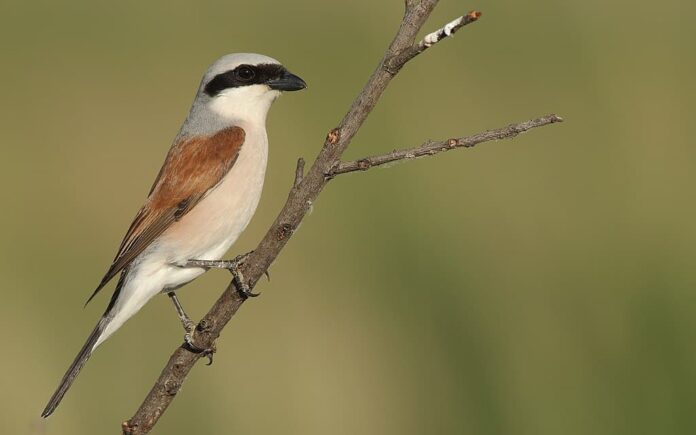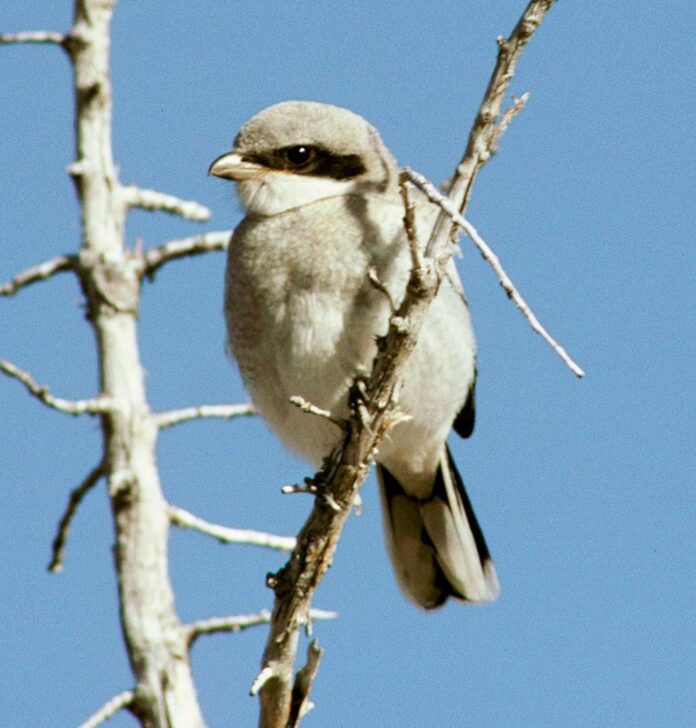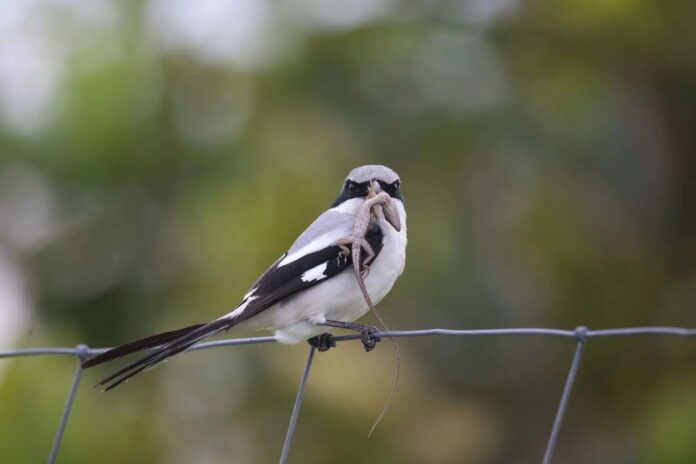When it comes to ferociousness, size does not really matter in the animal kingdom. Shrike is the perfect example to prove this fact, looking nice and pretty yet very menacing. What makes shrikes this vicious? You are going to learn some more information about them below along with some interesting facts as well. Let’s take a look and see if shrikes can be the next spirit animal that you like.
1Appearance

Ruthlessness asides, shrikes are just adorable birds about the same size as mockingbirds if we just focus on the look. A shrike has dainty legs and long tail feathers, and it has a broad head and chest. As for its feather colors, they vary from black and brown to cream, tan, and white. There are up to 34 species of shrike, and each of which is slightly different in color and pattern. The unique thing about this bird is that it has sharp hooks at the ends of its beaks like raptors. There is a toothlike spike with corresponding notches on the lower mandible on either side of its upper bill. The combination of these allows this small bird to kill its prey very quickly.
2Behavior

Despite their tiny size, these birds are notable for a number of characteristics that they possess. Shrikes are small songbirds with frightening hunting skills that involve ferocious tenacity in the mix. Due to their hunting prowess, shrikes also go by another name as the “butcherbirds”. Our butcherbirds have brutal and unique methods of killing, eating, and storing their prey. The combination of bravery and incredible hunting strategies allows them to kill a small mammal almost as large as itself. Thanks to the sharp beaks, sometimes it simply grabs prey by the neck and then aggressively shakes them to kill them. A songbird that kills mammals, how does that sound to you?
Shrikes kill larger animals by using sharp objects like barbed wire, sharp branches, or thorns. Simply put, a shrike uses any of the objects mentioned earlier to impale its prey by the head or neck. When did a bird become this smart, right? The fascinating things do not end there, tools used go further than just killing when it comes to their creativity. Shrikes also use those sharp objects to tear large pieces of food to make the meal easier to consume. Sometimes they use those objects to hold the food still like a fork while pulling the meat with their beaks.
3Feeding & Habitats

Just like most other small birds, shrikes also feed on insects and small invertebrates that they can find. Normally, they only limit their targets to prey that they can overpower but bigger treats are common. That is when they also hunt bats, lizards, mice, and snakes using sharp objects that they can find. Shrikes are diurnal birds so they hunt for prey only during the daytime. During hunting, they perch on high branches with clear open views so that spotting prey is easy. Once a shrike sees a potential meal, it swoops down, grabs it, and carries it to its favorite impaling location. The perfect example of working smart not working hard that we can follow. Sometimes shrikes also show up at domestic bird feeders to hunt smaller birds there, and the menu goes on.
The distribution of shrikes is in Africa, Eurasia, and North America, and only one species is in New Guinea. Depending on their ecosystems and regions, shrikes live in a wide range of habitats where they come from. The most common habitats of these fierce birds are forests, open grassland, savannah, scrubland, and woodlands. There are also species that live in dense forests as well as urban areas. However, agricultural areas and farms are their favorite regions due to the availability of barbed wire which is their ultimate weapon. Most species are in Africa, and there are no shrike species living in Australia or South America at all.
4Predators & Threats

Shrikes are vulnerable to larger birds like crows, magpies, weasels, and more. Sometimes snakes also attack them or eat their eggs if the opportunities are visible. Another common predator that often kills these songbirds is domestic cats. In fact, domestic cats kill billions of songbirds every year and shrikes are among those victims. Some species suffer in areas where humans destroy their habitats, especially Newton’s fiscal species. This species is Critically Endangered in the IUCN lists, while some other species are doing okay.
Interesting Facts About Shrikes
- Shrikes are swift flyers at a speed of 25 to 30 miles per hour.
- Sometimes male shrikes use their killed prey on barbed wires to attract females.
- Loggerhead shrikes are probably the species with the highest population, with an estimation of around 4.2 to 7 million.
- Shrikes are territorial, and they generally form monogamous pairs and aggressively defend their territories together.
- These birds communicate through body movements, food caches, and stride calls. They also have different calls for attracting prey, courtship, nesting, and raising the alarm.
- Some shrike species feed on a toxic grasshopper known as the lubber grasshopper, but in a smart way. The birds impale the insects for at least 2 days before consumption to make the meal less dangerous to eat.
Related Post: Things You Don’t Know About The Fearsome Honey Badgers




